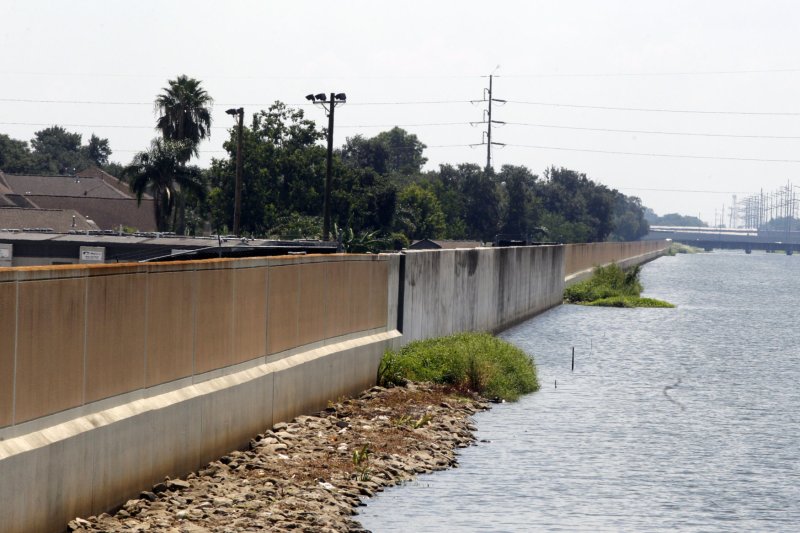A section of the 17th Street Canal, in New Orleans, which was breached during Hurricane Katrina is shown nearly a decade after it gave way, flooding vast areas of the city. File Photo by AJ Sisco/UPI |
License Photo
May 4 (UPI) -- Damage from a natural disaster in one place can spread globally due to urban trade networks, a Yale study said Monday.
Researchers developed a simulation with an urban trade network model to map cities dependence on each other across the globe and how a disaster in one area can effect other areas, according to the study, published in Nature Sustainability.
"Cities are strongly connected by flows people, of energy, and ideas -- but also by the flows of trade and materials," Chris Shughrue, lead author of the Yale study, said in a press release. "These connections have implications for vulnerability, particularly as we anticipate cyclones and other natural hazards to become more intense and frequent as a result of climate change over the coming decades."
Shughrue, who is now a data scientist at StreetCred Labs in New York, based the study on his dissertation work at Yale.
Karen Seto, a Yale School of Forestry and Environmental Studies professor and Brad T. Werner, a professor at Scripps Institution of Oceanography in San Diego, Calif., co-authored the study.
While most research is focused on the vulnerability of a city to climate change based on local events, but the new study shows that local disasters can have a domino effect through urban networks, Seto said
The study reveals that local economic impacts from damage to production facilities could trigger secondary impacts that could end up being three times greater than local impacts.
"These adverse secondary impacts are responsible for up to three-fourths of the effects of the largest storms and are generated primarily by cyclone exposure in North America and East Asia, in part because of the roles of these regions as principal purchasers and suppliers, respectively, of industrial materials," researchers wrote in the study. "Vulnerability to adverse secondary impacts of cyclones is highest in cities that are strongly dependent on the global trade network but have relatively few suppliers."
Natural disasters can cause shortages and price hikes, such as the damage to coking coal production in Queensland, Australia from catastrophic flooding that caused a 25 percent spike in global costs. Another example was oil production damage from Hurricane Katrina extending far beyond New Orleans.
The risk of a Hurricane Katrina-level storm surge increases with global warming, according to a 2013 study.
"To be resilient to climate change is not only about building dikes and sea walls, but understanding a city's supply chains and how they are linked to other cities that may be vulnerable," Seto said.















